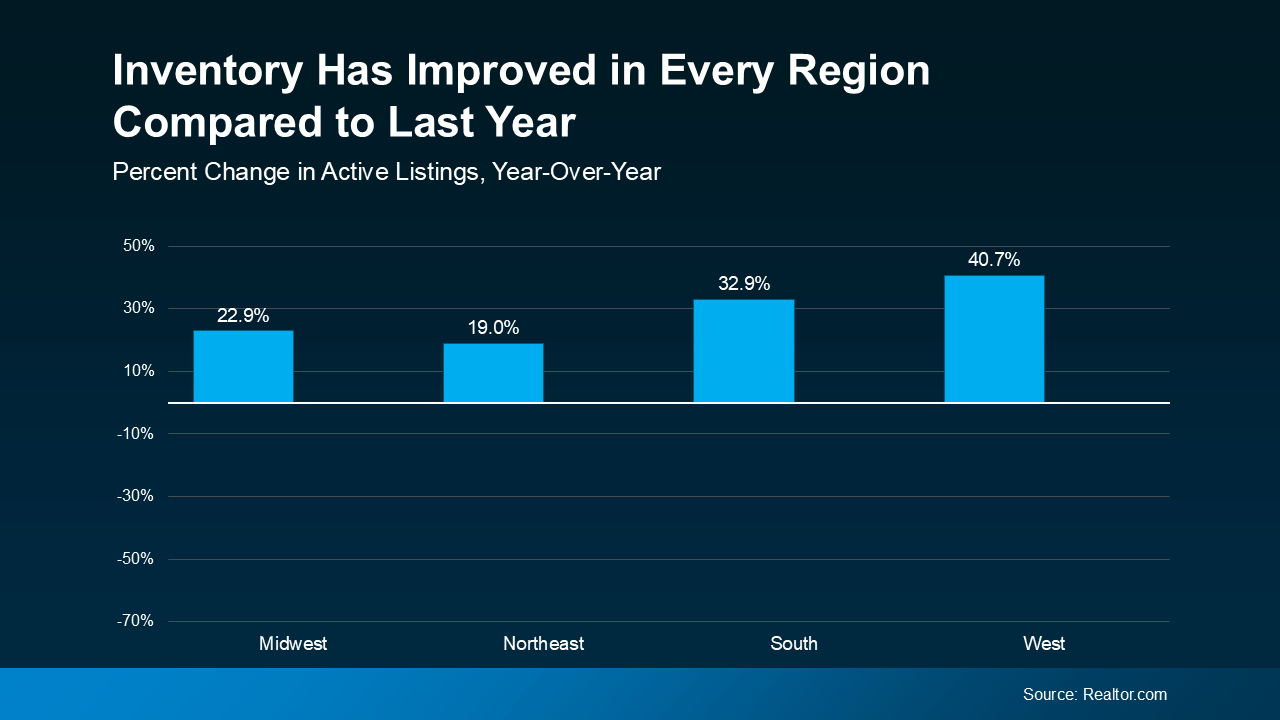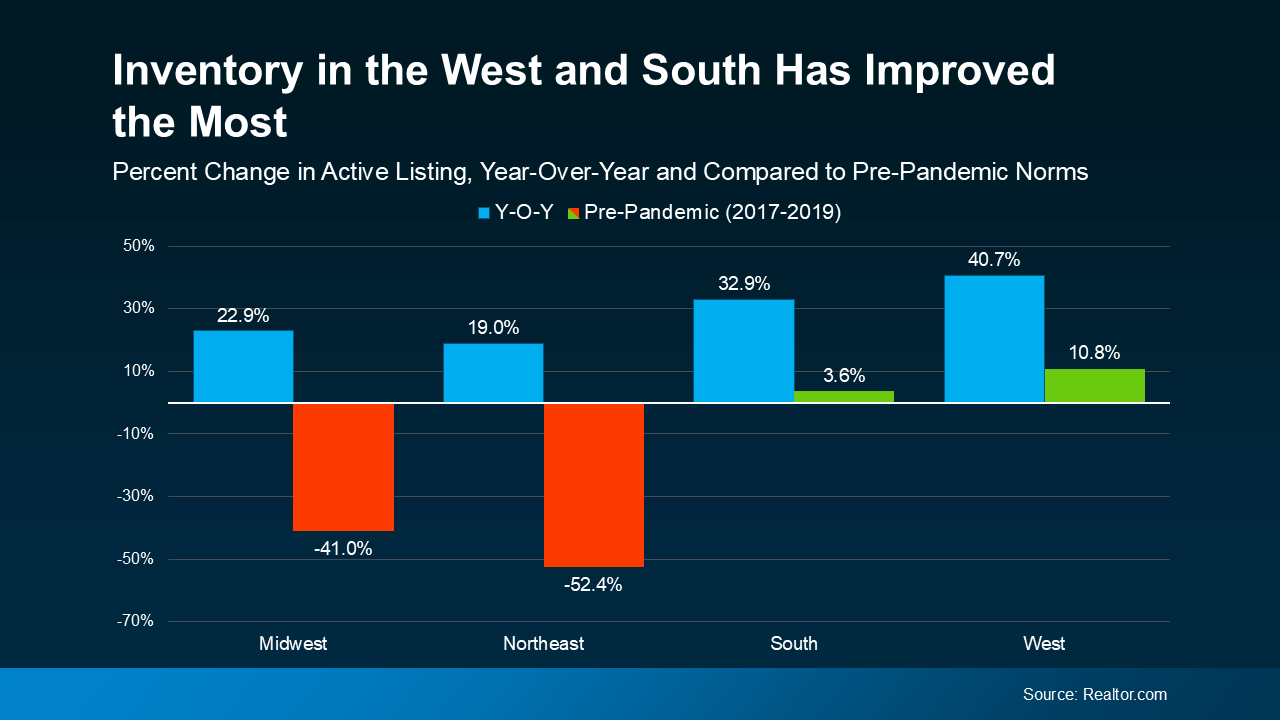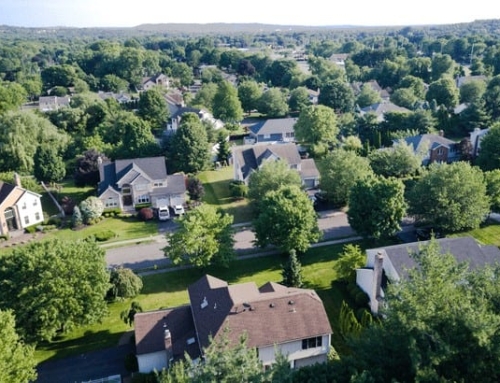Is Inventory Getting Back To Normal?
June 12, 2025
After years of it feeling almost impossible to find a home you want to buy, things are changing for the better.
Real estate inventory is growing across the U.S., giving homebuyers more options than they’ve had in years. However, this increase in homes for sale varies greatly by location. That’s why working with a local real estate agent is essential—they understand neighborhood trends and can help you navigate your specific market for a successful move.
Here’s a quick breakdown of the latest real estate inventory trends, so you can stay informed about what’s happening in the housing market and what to expect if you’re planning to buy or sell a home.
Significant Growth Across the Nation
The number of homes for sale is increasing across the United States, with all four major regions experiencing growth. According to Realtor.com data, housing inventory is up at least 19% year-over-year in every region. The Western U.S. leads the way, with inventory jumping nearly 41% compared to the same time last year—giving buyers more opportunities than ever(see graph below):
There are two main reasons for this increase:
- More sellers are listing their homes. Many homeowners have been waiting for mortgage rates to drop before making a move. Now, some have decided they can’t wait any longer. May had more new listings than any May in the past three years.
- Homes are taking longer to sell. That means listings are staying on the market longer, which increases the total number of homes available. In May, the typical home took 51 days to sell – much closer to what’s more typical for the market.
An increase in homes for sale is helping to shift the real estate market toward greater balance. Over the past few years, sellers held the advantage, but that dynamic is changing. While it’s not yet a full buyer’s market nationwide, conditions are steadily improving—making it a better time for homebuyers to explore their options and find the right property. Danielle Hale, Chief Economist at Realtor.com, explains:
“The number of homes for sale is rising in many markets, giving shoppers more choices than they’ve had in years . . . the market is starting to rebalance.”
How Much Growth We’ve Seen Varies by Area
The timeline for a fully balanced housing market will vary depending on location. While some areas in the U.S. are seeing real estate inventory return to pre-pandemic levels, others are still experiencing slower growth. Local market conditions play a key role in how quickly balance is achieved, making regional trends crucial for both buyers and sellers to watch.
Let’s examine the latest housing market data by comparing current inventory levels to the last stable real estate years—2017 to 2019. This comparison helps highlight how today’s market trends stack up against historical norms, giving homebuyers and sellers a clearer picture of where the market stands now.
In this comparison, green highlights the U.S. regions where housing inventory has returned to more typical, pre-pandemic levels. Red indicates areas where inventory has increased but still remains significantly below historical norms. Understanding these regional differences is essential for buyers and sellers navigating today’s evolving real estate market (see graph below):
For today’s homebuyers, this surge in housing inventory means more options than were available just a year ago. With increased listings across the board, it’s now easier to find a home that fits your needs and budget. More choices in the real estate market give buyers a stronger position and a better chance of securing their ideal property.
But not all markets are the same – some will take a bit longer to get back to more typical levels. So, lean on a local agent to find out what the inventory situation looks like where you want to live. They’ll be able to tell you how much growth they’ve seen locally and how to tailor your home search based on what’s available in that area. This is just one of the reasons a local agent’s perspective matters.
Bottom Line
Real estate inventory is on the rise, but the pace of recovery differs depending on where you’re looking to buy a home. Some markets are returning to normal faster than others. That’s why understanding local housing trends is essential. Let’s connect to discuss what’s happening in our local real estate market and how it could impact your next home purchase.
What’s one thing you’ve noticed lately that makes the market feel different than it did a year or two ago?






